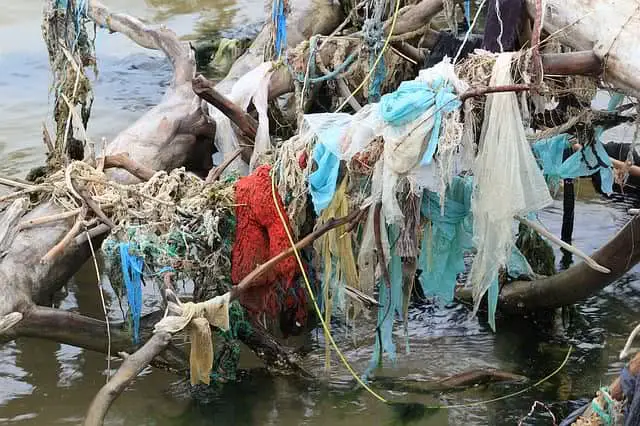Oceans are a vital part of the ecosystem and are extremely important for the survival of human beings. Over the years the oceans are one of the most unexplored parts of the Earth. This distant lack of knowledge about the seas had led human beings to become uninterested and ignorant about the condition in which the oceans are at present. Despite these facts, inhuman treatment of the ocean has resulted in a devastating effect on the creatures and environment of the seas.
The oceans are getting emptied day by day at an alarming rate and are replaced by plastic, chemicals, and wastes that are enhancing the marine pollution. If marine pollution continues to grow at this rate in the coming years, then the environmentalists have already warned that mankind will enter the point where there will be no chance of returning.
According to a report issued by the scientific panel of the U.N., the health of the ocean due to marine pollution is much worse than that is predicted. One of the main concerns for them is the absorption of heat from carbon dioxide emission resulting in the acidification of the ocean is happening at a much faster pace than previously calculated.
Some Facts that shows how Marine Pollution has changed over time
There are many facts that are associated with the subject of how marine pollution has changed along with time. According to a recent study, it is seen that almost 90% of the apex predators have been extinct in the past 5 years. The bottom food chain is negatively impacted due to the increased amount of carbon dioxide emission that has resulted in the increased acidification of the oceans. It is estimated that the way coral reefs are now bleaching, 90% of the corals will vanish within this century.
Commercial fisheries have gone out of business as a result of climate change and overfishing. Marine Pollution is causing global warming that is causing the ice to melt in the north and south poles. As a result, sea levels are rising causing floods in the towns, destroying homes as well as businesses that are present along the coastlines of the map. The islands of trash or dead zones are increasing over the years. One of the largest dead zones is in the Great Pacific Garbage Patch that is the size of Texas City and has killed thousands of aquatic lives living in that area and consists of 1.8 trillion debris.
In 2006, the USA has revised its laws for fisheries that have helped them to recuperate the stock of the fish. Almost, eight million metric tons of plastic are dumped into the ocean every year that is almost 10 times larger than the total plastic dumped into the seas for the past 100 years! It is believed that by the end of 2050, the oceans will carry plastics that will outweigh the number of fish in them. According to scientific research in 2004, there are a total of 146 hypoxic zones in the seas around the globe. These types of zones have low oxygen supply as a result of which aquatic animals die of suffocation. In 2008 the number of hypoxic zones increased to 405.
Moreover, in 2017, the oceanographers detected a dead zone in the Gulf of Mexico that is as big as the city of New Jersey. Oceans are acidifying at a much faster pace than the past 300 million years. If we do not control the current emission of carbon that is damaging the pH level of the oceans, then in the coming years the sea waters will be 150% more acidic than they are right now.

Some other Facts Related to Marine Pollution
Apart from the above facts, there are other unknown statistics related to marine pollution that has changed over time. They are as following.
- The shellfish industry was the backbone of the USA’s economy. But due to more acidic water, shellfish are dying leading to a loss of 110 million dollars to the industry. It has also taken 3200 jobs of the people across the world.
- More traces of detergent powder are found in the waters of the Antarctic and Arctic. This clearly indicates that coastal runoffs are much more widespread and persuasive than scientists have assumed.
- The amount of heat in the ocean has augmented since the year 1950. Overheat determines the temperature of the surface water and currents of the sea.
- The surface temperatures of the ocean around the globe have increased in the 20th century. The temperature has increased unbelievably in the past 30 years.
- The sea level has started to rise roughly in six-tenths of an inch every 10 years. The rate is enhancing at 1 inch for every 10 years. Some coastlines have observed an increase of 8 inches in sea level from the year 1960 to 2015.
- From 1996 to 2011, New York and Florida coastlines have lost more wetlands and drylands than it has gained.
- In the past 10 years, land-based run-offs like agricultural runoff, untreated sewage, plastics, nutrient, and pesticide discharge are accountable for 80% of the marine pollution across the world.
- In 2019, there is more than 500 dead zone which covers near about 245,000 sq km globally. This area is almost equal to the size of the United Kingdom.
The threats of marine pollution to the ecosystem have slowly developed from the year 1960 to 1970. Most of the litters in the environment due to plastics were observed between 1970 and 1980. The rapid dumping of waste and debris into the ocean has resulted in a rapid increase in marine pollution. It is definitely altering the entire system of the ocean which in turn is affecting the ecosystem. It is high time that we should become aware of what we are returning to the environment.